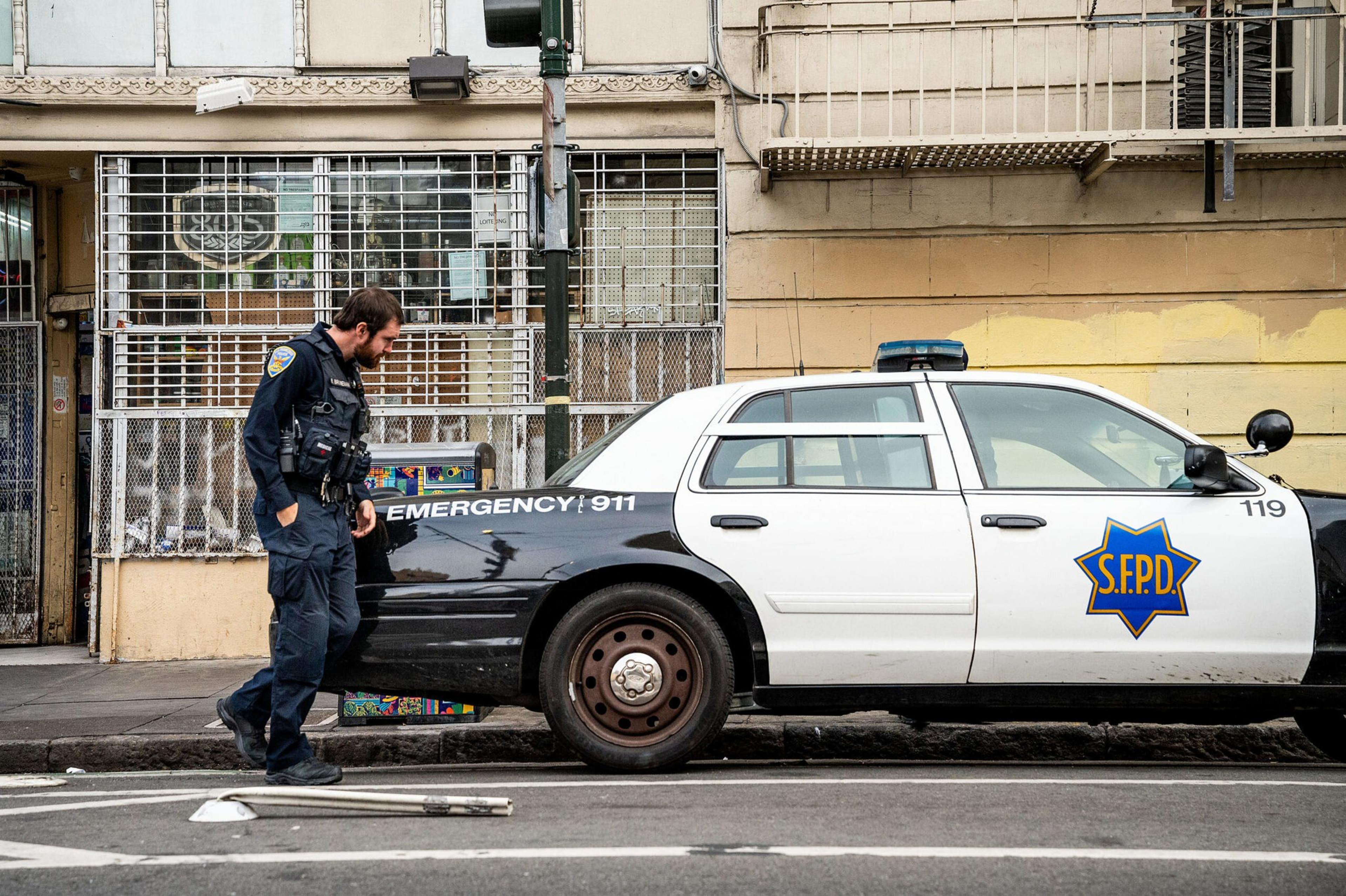The Standard’s Joel Umanzor examines the state of traffic violation enforcement in San Francisco.
San Francisco is only six months away from the target year of 2024 in the city’s Vision Zero plan to eliminate traffic deaths. Yet, according to city statistics, eight people have died during traffic incidents so far in 2023.

Last year was the deadliest for traffic fatalities since Vision Zero was announced in 2014, with 39 deaths in traffic incidents—19 of them pedestrians who were struck by vehicles.
This comes as there has been a 96.87% decline in traffic citations around the city (opens in new tab) between 2014 and 2022, according to Walk SF—a nonprofit hoping to make San Francisco the most pedestrian-friendly city in the country.
These statistics raise the question: Is traffic enforcement below what it should be in San Francisco and, if it is, when should it be back to normal?
Safe streets advocate Luke Bornheimer worked with data analyst Stephen Braitsch on a probe (opens in new tab) of the San Francisco Police Department’s traffic enforcement from the past five years. Their data shows that traffic enforcement has declined drastically since 2013—even during periods with the department increased staffing and funding.
“Traffic enforcement by SFPD has been decreasing steadily since 2013 and is almost nonexistent compared to 2013 numbers, and yet, roadway deaths and injuries have remained unchanged—which suggests that traffic enforcement has little to no effect on roadway safety,” Bornheimer said.
He added that data is “inconclusive” on whether armed traffic enforcement would actually curb fatalities on San Francisco streets.
“Active infrastructure—like protected bike lanes—are strongly correlated with a decrease in crashes, injuries and deaths,” Bornheimer said. “Mayor Breed and the city should be investing more money in active transportation infrastructure and less money in armed traffic enforcement if they want our streets to be safer.”
The Mayor’s Office did not respond to requests for comment by publication time.
In late May, District 8 Supervisor Rafael Mandelman asked SFPD to deliver a plan of action regarding getting traffic enforcement back to “meaningful” levels. He expects that a plan will be announced as soon as mid-July.
“In that letter, we asked them, ‘What would it take to get to 2014 levels of enforcement?’” Mandelman said. “Give us a plan and give us what you need in terms of staffing and additional resources while potentially changing the law or policy, so that we could have meaningful traffic enforcement on the streets of San Francisco.”
The department did not respond to a request for comment on traffic enforcement or to provide detail on the timing of their plans by publication time.
Mandelman also believes the issue goes deeper than police staffing levels.
“It cannot all be the decline in staffing. The decline in enforcement is much greater than the decline in staffing so something more going on there,” Mandelman said, adding that some would say the Police Commission is discouraging traffic enforcement.
“I think the commissioners would say they aren’t stopping traffic enforcement, but rather, biased traffic enforcement,” he said. “I think we need to find a way for the police department to do that and still stop bad drivers.”
In District 8—which includes the Castro, Glen Park, Noe Valley, Diamond Heights, Mission Dolores and Cole Valley—Mandelman said pedestrians and cyclists alike deal with a variety of traffic hazards when maneuvering their neighborhoods.
“People blow through stop signs and red lights, people speed and make illegal turns,” he said. “We see it all.”
Although not in his district, Mandelman points to Valencia Street as a specific area that needs more traffic enforcement—even with the advent of protected, center-striped bicycle lanes—but said that the issue stretches across the whole city.
“I think it’s everywhere,” he said.
Speed, according to Walk SF, is the top cause of severe and fatal crashes in San Francisco. It’s something the organization hopes the police department details in their plan.
“SFPD needs to enforce dangerous speeds with enough frequency and visibility—and in the most impactful locations—to help shift driver behavior,” Walk SF Executive Director Jodie Medeiros said in a statement.
In May, SFPD issued 119 speeding tickets citywide, an 34% increase from 89 in April, according to the most recent police data (opens in new tab).
In addition to SFPD’s plan, Mandelman believes traffic enforcement needs more “consistent” oversight from the Board of Supervisors.
“I’m hoping to have quarterly meetings at the Public Safety and Neighborhood Services Committee to check in on how things are going because it’s not good,” he said.
